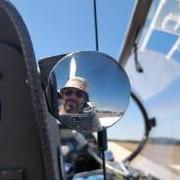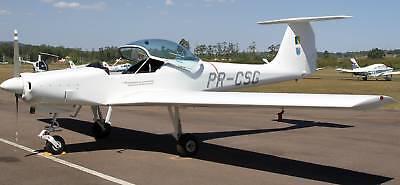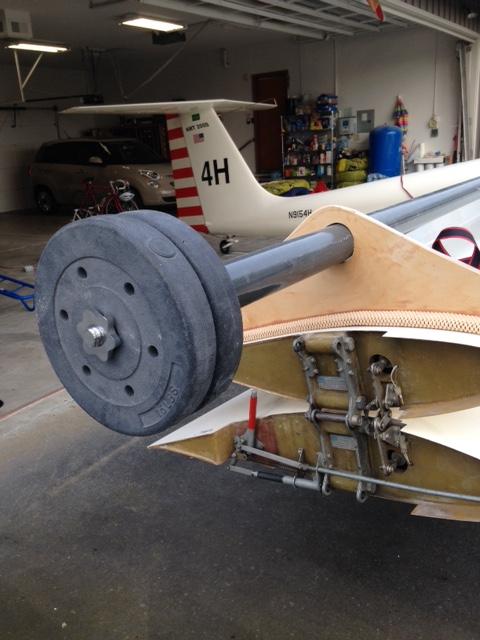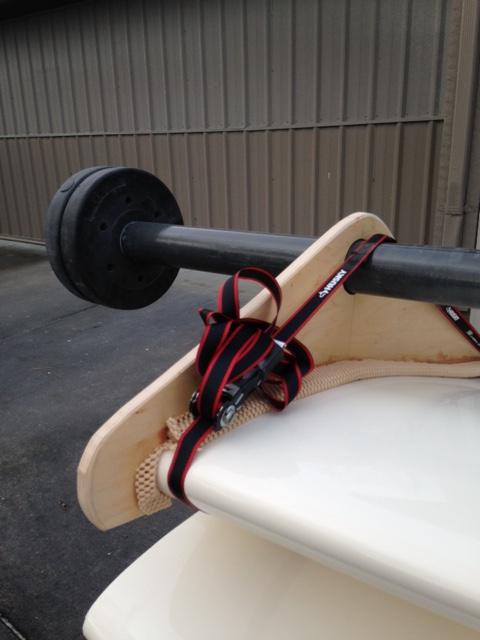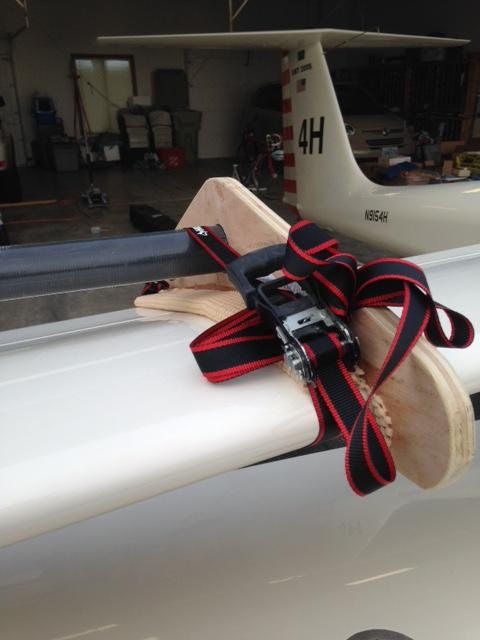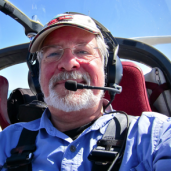Leaderboard
Popular Content
Showing content with the highest reputation since 04/25/2023 in Posts
-
Attached you will find the TCDC for the AMT-100,200,200SO,and 300. It does show a MTOGW for the 200SO as 1050KG (2315 lbs ) EP-8602-15i.pdfEP-8602-15i.pdf ) I don't know how this will apply to each of your airframes as it states 850 kgs for the 200 and 800 kgs for the 100 Aeronautical Products Certificated in Brazil - TC Details / EP (anac.gov.br) TC no 8602 Mike Yes, I am bored and looked it up.2 points
-
Thanks! I'm familiar with that vintage 1993 AC. I'll point out however, that the oft-quoted section on span loading and gross weight is a sub-subsection of the whole thing. Item 1 of the AC states in part "This advisory circular (AC) provides information and guidance concerning acceptable means, but not the only means, of showing compliance ...". Two in production glider-category aircraft fail this test. The Pipistrel Sinus SW fails it with span loading, and the Stemme S-12 fails with a gross weight of 900 kg. With zero certificated gliders made in the USA, the FAA normally punts certification to JAR-22, hinting that there's some flexibility there too. However, the workings of such bureaucracies are beyond the understanding of mere mortals ... Not that I'm disagreeing with your post, but I'd still like to see a copy of a real TC for a Super Ximango with a higher listed gross weight. Call it curiosity ...2 points
-
Steve's design is awesome and a life saver!! Thanks for everything !! P.S. She is still flying weekly....1 point
-
@flyingcircus, you can find the flight manual in German and Spanish here: https://www.forandoavela.es/d/146-manual-de-vuelo-del-taifun-17e-aleman-y-espanol1 point
-
I am looking one used AMT-200S and what I found very strange is its weight; it is almost 660 kg, while technical data says 620 kg. It is well equiped, but when I check weights of individual parts installed, I can't explain 40kg difference, not even close to. Could generous instrumentation (clasical and dynon glass cockpit, transponder, elt and a few other things) still be a reason for 40 kg added weight? Was there high variation in weight during manufacturing process, so this airframe was 'unlucky' and is overweight? Or that aircraft is likely to be damaged and repaired? The problem is that 660 kg empty weight means 190kg payload and only 30 kg is left for fuel if me and my wife board the plane 😞1 point
-
It's not too bad, but you will need a spare fuse and friendly IA to sign it off. Spruce has an LED light bar that goes under the top lip of the panel, casting red or white light down. That would work nicely. I did the panel in my Europa and used LED rings around each instrument. That works, but you only have the option of white light. Red is better for night vision. It's tough to fly out of my strip at night because of all the deer. Susan and I came back from a fly-in up in Kentucky in my Europa, arriving after dark. My strip is lighted with a VASI. So, no biggie there. I did a pass through with the landing light on wigwag to make sure there weren't any deer on the runway. All was clear, so I came around and landed. As we were rolling out I looked to the left and there were six sets of eyes watching from just off the side of the runway. One of those things that sets your knees to knocking 45 seconds after it happens. Haven't flown out of here at night since. LOL!1 point
-
An older gel coat finish (S/N before 121 or so) would definitely be heavier, but not 50 lbs heavier. However, little things do add up rapidly. As an old EAA councilor once told me "Son, take care of the ounces and the pounds will take care of themselves". What you probably should do is weigh the airplane and verify the numbers. It's a very simple procedure. Look for it in the manual. That much of a discrepancy would concern me. WRT the designation for a "motorglider", the FAA refers to them as "Powered Gliders" in an Advisory Circular entitled “Powered Glider,” (AC) 21.17-2a. This AC states three requirements to be certificated as a “Powered Glider” under FAA regulations: First, it may be either Single or two place (no two place back seats). Second, the maximum gross weight is limited to 850kg (1874 lbs), and third, the wing loading (weight/span) loading must be no more than .62 lbs/sqft. In addition to AC 21.17-2a, FAR 91.205 lists the requirements for engine monitoring. The requirements laid out in AC 21.17 were adopted by the FAA in 1984, nine years before the EU was even formed. These requirements come directly from the FAA, not the EU. FWIW, many authorizing agencies around the world reciprocate with the FAA regs. In the case of Brazil, ANAC, the Brazilian FAA, adopted our FAR's verbatim with little deviation, with one of those deviations being the gross operating weight of the Ximango (depending on how it is registered). The 2500 lb weight limit comes directly from Claudio Vianna, the owner and Chief Engineer of Aeromot, as well as several of his junior Engineers and the factory test pilot. You will find this designation on the various Type Certificates. The Ximango has been used for a variety of missions, not just as a motorglider. These include coastal patrols, wildlife patrols, police surveillance, primary trainers for the USAFA, and for oil/gas/mineral exploration. The Ximango platform (fuselage and inboard wing sections) were used in the Guri (AMT-600), a primary aerobatic trainer used by the Brazilian Air Force, 28 of which were manufactured. Equipped with an IO-360 and constant speed prop, the Guri is a 180 knot aerobatic airplane. The Guri was also manufactured with an 0-200, fixed pitch prop and fixed gear for a domestic basic trainer. I saw seven of these when I visited Brazil and the Aeromot factory in 2010. Here's a photo of the civilian version of the Guri:1 point
-
My 2005 Ximango (leather trim, but no lights) shows similar weight on what I believe to be the original documents: 657 kg (1450 lb) basic, printed as a document 6/24/2006 and using metric units. Then, unsigned and handwritten in SAE units: plus 18 lb (8 kg) of avionics [2x 10a's, Garmin 430, 106a, GTX-327], giving a final weight of 1467 lb (667 kg). Useful load is then 183 kg (403 lb). It's not a big problem for me since I'm fairly light and my imaginary girlfriend even lighter, but does remain a mystery. No repairs in the logs and no evidence of them visible on the airframe that I can see. Some small part of the unexpected weight may come from my observation that the surface finish of the last few model years seems to be better than earlier ones. But the extra 50 lb remains hard to explain. BTW, I think that the 850 kg limit comes the EU, not the FAA. The FAA considers them either gliders or airplanes and has no special designation for motorglider or self-launcher, but the US type certificate is based on reciprocal agreements with the EU and thus retains the 850 kg. Do you have any printed reference to the ~2,500 lb weight used in Brazil and some other countries?1 point
-
1 point
-
I've been to the Aeromot factory in Porto Allegre. The airframe components are molded using specifically sized and shaped pieces of cloth and specific amounts of resin, then post cured. The parts are assembled using flox (a mixture of flocked cotton and epoxy resin) The metal components are CNC'd. So, they're all very consistent. I would be surprised if there was more than 5 pounds variation airframe to airframe. This is a type certified airplane, not a collection of random parts. Changing parts on a TC'd airplane means a mountain of paperwork, and, in the case of the Ximango, 28 times because it's Type Certified in 28 countries. Weight differences would more likely be because of something like the battery being moved aft or an older, heavy avionics suite. Things like avionics, leather, an ELT, or other equipment could add a significant amount of weight. I would be highly suspect of the paperwork. I'd do a weight and balance and see if it matches. I can't imagine any sort of repair adding 80+ lbs to the airframe. BTW, that vintage has a urethane finish. Highly desirable.1 point
-
Thank you for quick replay. The plane is from 2007. Was there big variation in the weight of the Ximango planes? I would suppose that in manual production of composite planes weight is not very consistent. But I have no idea what is actual variation in weight from plane to plane, which all should be the same.1 point
-
I ran a composite repair shop for 18 years. We had several X's come through during that time, mostly for gear up repairs. I also own #135. I doubt the extra weight is from a repair unless they glassed in a half dozen cement blocks. What year is this one? Repaired areas can often be seen by the color differences in the paint/gel coat. Do you have access to scales? Do a weight and balance and see what the scale says. You will need to level the airplane when it's on the scales. Make sure you do it with the wings unfolded. The procedure is in the manual. Paperwork is often wrong. It's possible that the 40 kg(88lbs) could be instrumentation, but it would be a real stretch. Weighing the airplane will also help you track down where the extra weight is (if it's there at all). I've seen A&P's use bathroom scales to do W&B. Don't do that. Find some electronic car scales with tare function. Race car enthusiasts will have them. FWIW, the 1850 lb gross limit is for USA operations in the self-launch category. The Ximango is routinely flown at 2500 lb gross in other parts of the world. The Ximango is an extremely strong, well built airplane. If you ever see one with the wings off you'll see what I'm talking about. The spars are MASSIVE. If you're running close to or at gross I wouldn't worry about it, structurally speaking.1 point
-
I own Ximango S/N 97 since early 1999. 80 hp Rotax. My Ximango logbook shows almost 2000 hrs total with 1500 hours engine time. I 'drove' it four times from my home base near Philadelphia, PA out West to Nevada, Arizona or California. Several trips to Oshkosh and Florida and other multi day adventures. I never had to delay a trip for a unplanned maintenance issue. I cruise at 105 kts indicated near sea level. At 8000 to 10000 ft indicated airspeed is still around 95 - 100 kts with full throttle. This is better than 110kts TAS. I occasionally did short (`100 sm) soaring cross country flights. You need a really good day. In my Kestrel (18m, flaps, L/D 43) I could have made 300 sm or more. The glide ratio number does not the the whole performance story. at speeds > 70 kts. sink rate increases more than in a glider of similar L/D. The Ximango handles reasonable well in thermals. I most of the time could keep up with my club's Blanik or Grob-103 two seaters. I own winglets but hardly use them. The seats are very comfortable. Never had problems even on days with 10+ hours fight time. The ailerons get very stiff at cruise speeds. My arm gets really tired after 10 hours. The Ximango is my favorite aircraft with an engine. Still prefer the one's without. I would not use it as primary trainer. Recommend to have at least 20 hours in a modern glass glider or extensive tail wheel experience. The most challenging operation is cross wind take-off. Cross wind landings are more manageble if you know how to work the very effective spoilers. I have some exposure to other motorgliders in your list. Keep in mind my bias towards Ximango when I compare them. Ximango S (100 hp): I did ferry one from Puerto Allegre, Brasil to Florida. 4 days with 3 legs each. What an exiting trip. A little faster than my 80hp. It had the new ailerons which improve handling at cruise speed significantly. Need to watch engine temperatures and cowl flap setting. Not as forgiving as mine. Otherwise identical. Turbo Ximango (115 hp turbocharged, constant speed prop): Did some flight instruction for new owners who bought it used. Performance near sea level seemed to be sluggish compared to my aspirated 80 hp. Could have been a maintenance issue? Otherwise same characteristics as mine. Grob 109B: Flew it in Germany in the years 1975 -1998. Easy to fly. Robust. Was used in a glider club for short cross county flights navigation training, not so much as a primary trainer. I never turned off the engine. Probably only a few in the club tied soaring in it. Be aware the engine is base on the old VW. Spare parts might be no longer available. Wings fold back to a dolly mounted on the tail. Wings are heavy. Folding can be done by a single strong person. Do not try to unfold it by yourself. That takes at least 2, better 3 people.One with strength. One with brains. Diamond HK36: Kown a 'Dimona' in Germany. 15 m wing span. Turbo Rotax with constant speed prop. I liked its handling. Very responsive in rolls. Again much more a light power plane than a glider. I do not remember ever trying to soar it. Wing does not fold. Needs a 50 ft wide hangar door You are probably right that too many motorgliders are underused. I personally would stay away from any aircraft that was sitting unused for 2 years or more. Of coarse unless you are interested in tinkering more than in flying. I do not know anybody able to handle both the Rotax engine and a fiberglass air frame. If you find one, let me know. Have the aircraft inspected very thoroughly. Do a new weight and balance. If there are changes from the previous one, suspect undocumented repairs. Check all logbooks and the previous owner(s). If you have more questions, lets use the phone. Good luck1 point
-
Yes, there is hope for us wimps. I am 5'7", 230 lbs. and 73 years old and yes I have problems opening and closing the wings so I built a simple lever system and it is very doable now. It consists of a 10' carbon tube (what I had from an old delta hang glider) two wing shaped plywood pieces, a couple ratchet straps and two 25 lb. bar bell weights. The system reduces the lift weight from 30 lbs at the wing tip to about half that. My concern was what if it should slip while in the vertical position? I glued a rubberized material to the surface next to the wing for protection of the wing but when the ratchet straps are tightened nothing moves. The second issue was how far out could I go and not hit the ground when in the vertical position? Further than I thought but a quick measurement on the first lift answered the question and I have sense put stops on the tube so when I mount it no further measurement are required. Steve R.1 point
-
In the USA a non-type certified aircraft would be registered in the Experimental-Exhibition category. It could also likely be registered in the Restricted category, but there's not any advantage to doing so. A Taifun is considered a powered glider under FAA regs There are a number of maintenance items you can legally do as owner without the aircraft being registered Experimental, such as oil changes, tire changes, brake work, etc. As far as doing a repair it would require the signature of either an Airframe and Powerplant mechanic (A&P) or, for more complicated repairs, an Inspector Authorization signature (IA). In order to have full maintenance and inspection privileges you would need to build the airplane and then apply for a Repairman's certificate for that particular aircraft. The Repairman's Certificate allows the builder to perform all maintenance and inspections on that particular aircraft, but not others of the same design. Can't help with 2 & 3.1 point
-
Last May we held our first West coast "Regional" Fly-In: a one-day affair with lunch at the Harris Ranch. Seven TMGs and two power planes. A great time was had by all, with fabulous food, a lovely facility, and a short stroll to the restaurant from the Airport. We're planning on doing it again this year - May 4th - at 12:30 for the chow bell. We'll again have our own section of the restaurant. If anyone wants to make a longer time of it, Paso Robles is just over the hill to the west. Several of us are thinking of spending the night at either the Harris Ranch, or cheaper motels across the street. For those staying over, we might spend the afternoon flying over the to Avenal glider port, about 10 minutes flying time to the south west of Harris Ranch. There's typically good soaring in the foothills. I'm not sure what they're doing for dinner there, but I'll check it out if there's any interest. Of course, there's always the opportunity to have another "small" meal at the Harris Ranch, or a local Denny's. Check out photo's from last year in the Gallery. So, sign up in the Events tab > Future Events section, and let's party! Please pass this along to any of your flying friends. Richard1 point
-
1 point
